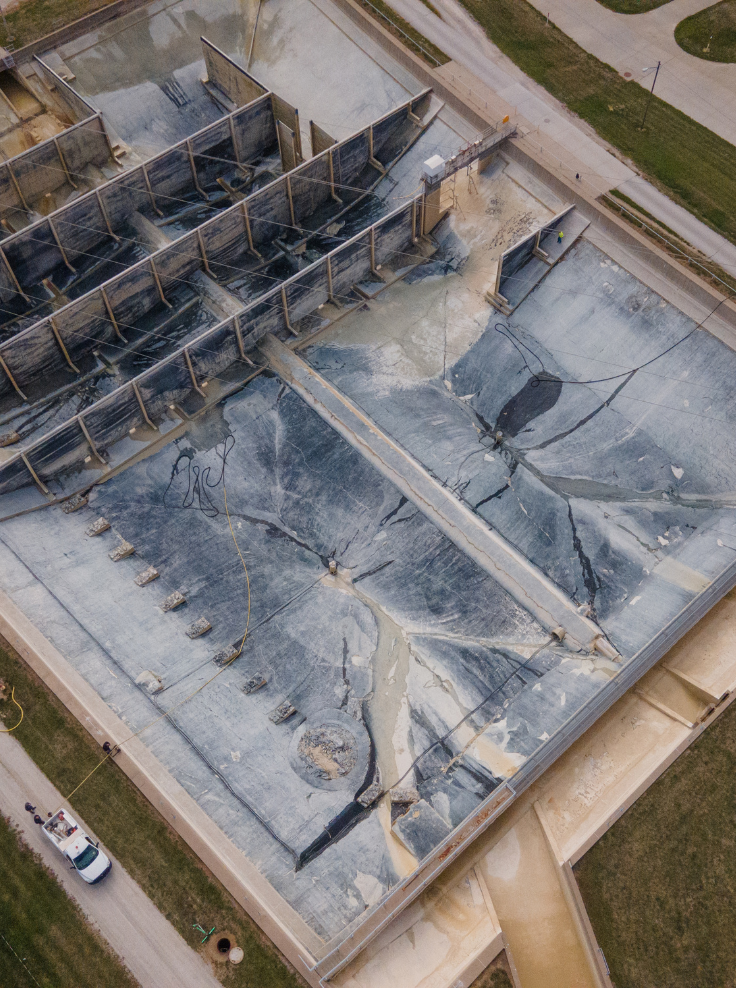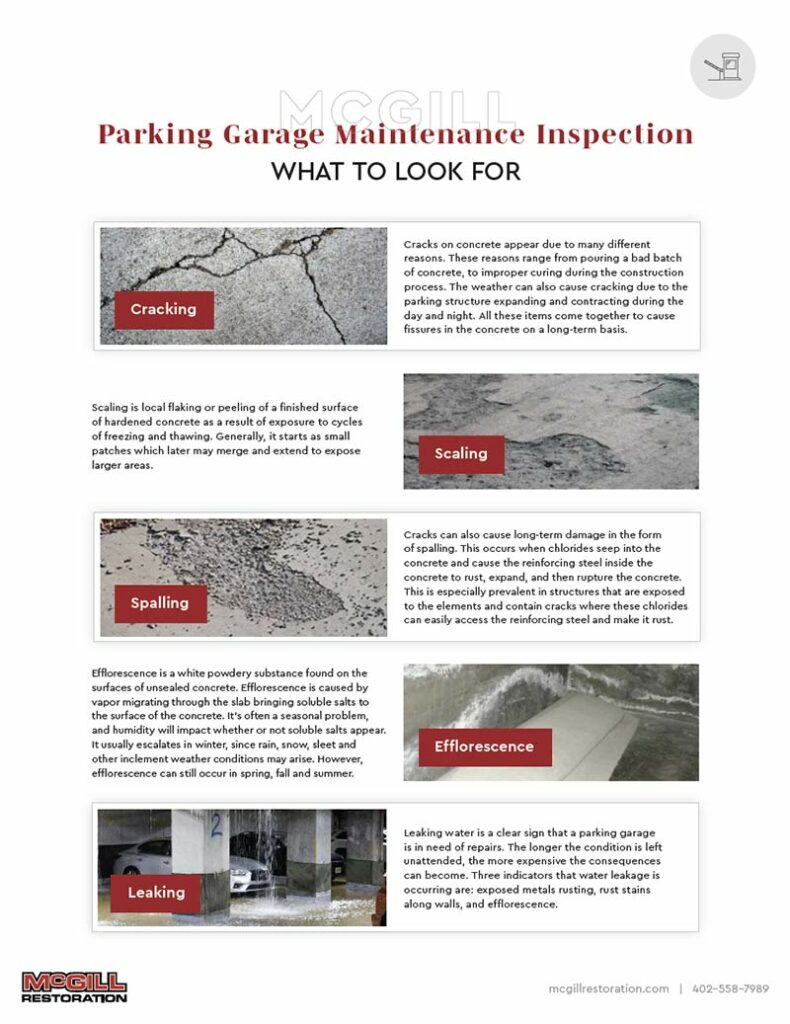From drinking water to wastewater, McGill Restoration works to protect community infrastructure.
Water and wastewater treatment facilities are essential for every municipality. Investing in structural maintenance and repairs is cycled into every municipal budget with annual inspections and engineering plans to keep these critical facilities operational.
McGill Restoration brings the specialized skills and equipment to these unique projects. Structural concrete and coatings are essential for containment and reliable performance at both water treatment and wastewater treatment facilities.
Water Treatment Infrastructure and Restoration
Every water treatment operation is slightly different. Some pump water from rivers or lakes and others from aquifers. It all depends on the location, geography and water source.
McGill Restoration has worked on several different facilities. One in particular uses lift stations to pump from the Missouri River while another pumps directly from the aquifer (via wells). That water is then processed through basins and chemical treatment before reaching the end user.
Lift Stations and Pumping – This element of infrastructure is designed to move the water from source to settling basins. It’s the first step in water treatment and is essentially bringing the raw water into the treatment process.
Settling Basins – Basins are cast-in-place concrete with coatings to hold the water that is in the treatment process. Lime and other chemicals are added to the basins and it attaches to organic material and metallic elements. Everything settles at the bottom, leaving clean water near the surface. This surface water is moved to the next phase of treatment.
Chemical Treatment, Filtration and Holding Tanks – Chemical facilities treat the biological organisms to provide safe drinking water. The safe water is filtered into holding facilities where it exits into the municipal delivery systems.
Structural Concrete Repair, Sealing and Coating
One common theme across every element in the water treatment process is containment. The basins, holding tanks and transportation infrastructure all use structural concrete and coatings to prevent seepage and water loss (or groundwater penetration).
Basins are drained, sometimes multiple times each year, and inspected by engineers. During this process, the damage is documented and a restoration plan is made. Timing is critical when the actual work begins as these basins can only be removed from service for a short duration. They also must be serviced before freezing occurs. On several projects, McGill Restoration has completed the entire restoration job in less than 60 days, meeting the objective to bring each basin back into service.
On basins specifically (see the MUD Water Basin 2 Case Study), hydrodemolition was done to completely demo and clean degraded concrete. Joint sealants, shotcrete and epoxy fillings were installed to close every gap.
These coatings are installed and maintained throughout the facilities and they provide an important barrier between the water and concrete. NSF-approved coatings are used as they are safe to come into contact with clean drinking water and help prevent water from eroding structural concrete while keeping the water safe as well.
Wastewater Treatments and Intensive Industrial Restoration
On the other end of the spectrum, we have wastewater treatment facilities that process and breakdown waste before it enters our waterways and environment. The facilities use a variety of filters to sort trash before the waste enters digesters to process bacteria and breakdown waste into solids.
The solids ultimately are removed and processed into fertilizers for agricultural purposes. The treated water is filtered into rivers where it’s safe to reintegrate with the environment.
Wastewater treatment facilities are especially important as they contain and process hazardous materials before it reaches our waterways. H2S Gas is especially toxic and burners are used to burn off the gas.
In the process, H2S gas (Hydrogen sulfide) and other powerful contaminants make contact with industrial coatings. The toxins will degrade concrete after penetrating the coatings. This is why selecting a high-grade coating designed specifically to resist H2S gas is imperative.
During service periods, the structural concrete is scoured and cleaned so concrete repairs, fillings and sealants can be effectively installed. Next, the correct coatings are applied to protect the concrete from H2S gas and other toxins.
Water treatment and wastewater treatment are fundamental to our communities. Providing safe drinking water and treating waste are advanced processes that rely on stable infrastructure. At McGill Restoration, we care about our communities and are honored to restore and maintain critical concrete and coatings for both water treatment and wastewater treatment.
Restoration of water treatment and wastewater facilities requires a specialized skill set. McGill Restoration has the equipment, expert staff and the experience to restore structural concrete and coatings on critical infrastructure. Keep your community in business and get in touch when it’s time to maintain and renew your water-based infrastructure.



